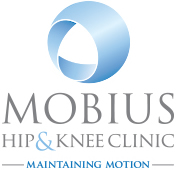
Open surgical hip dislocation
Open surgical hip dislocation refers to a procedure in which the ball-and-socket hip joint is surgically dislocated, so that the natural hip joint can be repaired. Open hip dislocation can be an extremely effective way to correct complex hip disorders, while preserving the natural hip joint.
An open hip dislocation is most commonly used to treat patients with a relatively healthy hip, but with a specific problem that requires open correction. This procedure is most effective for major hip deformities that may not be adequately corrected with hip arthroscopy.
Hip disorders treated with surgical dislocation include:
- Complex FAI deformities
- A deformed femoral head as seen in Perthes disease
- Slipped capital femoral epiphysis (SCFE)
- Articular cartilage defects (joint surface defects)
Examples of surgical corrections include:
- Treating/grafting surface cartilage problems
- Repairing the acetabular labrum
- Reshaping the rim of the hip socket
- Correcting the shape of the femoral head
Open surgical hip dislocation is usually conducted under general anaesthesia. A small section of the greater trochanter is cut (trochanteric osteotomy). This bony fragment and the attached muscles can then be moved to provide access to the hip joint. This allows us to gently rotate and expose the entire hip joint. The ball-shaped femoral head can be dislocated out of the joint so that the acetabulum and femoral head can be inspected and repaired if necessary.
During the procedure, we may need to smooth out areas of cartilage or bone. The labrum of the hip joint may be repaired. In some cases, areas of bone may need to be shaved away from the socket and/or femur. Once the hip is repaired, the joint is relocated (restored) and the greater trochanter (portion of the femur) is reattached using fixation screws. The trochanteric osteotomy (cutting of the femur) takes about eight weeks to heal. For several weeks after the procedure, patients are only allowed to put partial weight on the surgical leg. Patients will be on a specific rehabilitation program designed to help them regain strength and mobility in the hip.
As opposed to hip arthroscopy, open surgical hip dislocation requires an extensive surgical incision and approach, the dissection of several large muscles, and a substantial blood loss (around 300 cc). The disadvantage of hip arthroscopy is the limited access to the various portions of the hip joint, the inability to reshape the hip socket, and a decreased ability to precisely reshape the femoral head compared to open surgical hip dislocation.
The most severe complication of the procedure is damage to the blood supply of the femoral head. The entire blood supply of this critical region is carried by one artery (the medial femoral circumflex artery). If this artery is damaged, the femoral head can gradually undergo necrosis and ultimately hip arthritis can develop. Other complications include infection, blood loss, and nerve injury. Sometimes the trochanteric osteotomy made for this procedure may not unite and this can cause a problem with bone healing.





